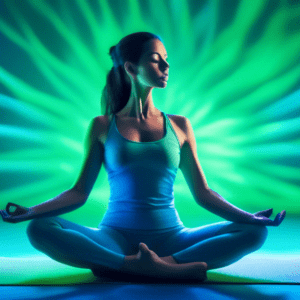Can Yoga Provide Relief for Varicose Veins?
Understanding Varicose Veins
Varicose veins, those twisted, enlarged veins often appearing on the legs and feet, are a common condition affecting millions. While usually not a serious health threat, they can cause discomfort, pain, and cosmetic concerns. While various treatments exist, from compression stockings to surgery, many seek natural ways to alleviate symptoms and improve circulation. This is where yoga enters the picture, offering a gentle yet powerful approach to potentially manage varicose veins.
How Yoga Can Potentially Help
Yoga, an ancient practice originating in India, emphasizes gentle movements, deep breathing, and mindfulness. Unlike high-impact exercises that can put stress on veins, yoga’s focus on controlled postures and stretches can be particularly beneficial for those with varicose veins. Here’s how:
1. Improved Blood Circulation
At its core, yoga encourages blood flow throughout the body. Many poses involve elevating the legs above the heart, utilizing gravity to help return blood to the heart and reduce pressure in the lower extremities. This improved circulation can be key in managing varicose veins and preventing their progression.
2. Strengthened Calf Muscles
Weak calf muscles can contribute to poor circulation in the legs, exacerbating varicose vein symptoms. Yoga poses like calf raises and downward-facing dog engage and strengthen these muscles, acting as a natural pump to promote blood flow back to the heart.
3. Reduced Inflammation
Chronic inflammation can worsen vein health. Yoga, with its calming and restorative nature, has been shown to reduce inflammation throughout the body. This anti-inflammatory effect can be particularly helpful for those experiencing swelling and discomfort associated with varicose veins.
4. Stress Management
Stress, while not a direct cause of varicose veins, can contribute to factors that worsen them. Yoga’s emphasis on deep breathing, relaxation techniques, and mindfulness helps manage stress levels, indirectly benefiting vein health.
Yoga Poses for Varicose Veins
Incorporating specific yoga poses into your routine can target areas prone to varicose veins. Here are some beneficial poses:
1. Legs-Up-the-Wall Pose (Viparita Karani)
This restorative pose is excellent for improving circulation and reducing leg fatigue. Lie on your back with your hips close to a wall and extend your legs vertically, resting them against the wall. Hold for 5-10 minutes, focusing on deep, calming breaths.
2. Supported Bridge Pose (Setu Bandha Sarvangasana)
This gentle inversion helps elevate the legs while opening the chest and strengthening the back. Lie on your back with knees bent and feet flat on the floor. Lift your hips off the ground and slide a block or pillow under your sacrum for support. Hold for 5-8 breaths.
3. Waterfall Pose (Viparita Karani Variation)
Similar to legs-up-the-wall, this variation involves placing your legs on a chair or elevated surface. This position promotes blood flow back to the heart and can help reduce swelling in the legs and feet.
4. Downward-Facing Dog (Adho Mukha Svanasana)
This foundational pose engages and strengthens the calf muscles, promoting circulation in the lower legs. Start on your hands and knees, then lift your hips up and back, forming an inverted V-shape with your body. Press your hands and feet firmly into the ground and hold for 5-8 breaths.
5. Mountain Pose (Tadasana)
While seemingly simple, this grounding pose improves posture and strengthens the leg muscles. Stand tall with your feet hip-width apart and your arms at your sides. Engage your thigh muscles, lifting your kneecaps. Lengthen your spine and hold for 5-8 breaths.
Precautions and Considerations
While generally safe, practicing yoga with varicose veins requires some precautions:
* **Consult Your Doctor:** It’s essential to consult your healthcare provider before starting any new exercise program, especially if you have existing health conditions.
* **Listen to Your Body:** Pay attention to your body’s signals. Avoid any poses that cause pain or discomfort.
* **Start Slowly:** Begin with shorter sessions and gradually increase the duration and intensity as your body adapts.
* **Modify Poses:** Don’t hesitate to modify poses using props like blocks, pillows, or straps to make them more accessible and comfortable.
* **Stay Hydrated:** Drink plenty of water before, during, and after your yoga practice to stay hydrated.
Beyond the Mat: Lifestyle Tips
While yoga can be a valuable tool in managing varicose veins, combining it with other lifestyle modifications can further enhance its effectiveness:
* **Maintain a Healthy Weight:** Excess weight puts added pressure on veins.
* **Engage in Regular Exercise:** Aim for at least 30 minutes of moderate-intensity exercise most days of the week.
* **Avoid Prolonged Standing or Sitting:** If your job requires you to stand or sit for long periods, take breaks to move around and stretch.
* **Elevate Your Legs:** When resting, elevate your legs above your heart for 15-20 minutes several times a day.
* **Compression Stockings:** Consider wearing compression stockings to improve blood flow in the legs.
* **Healthy Diet:** Consume a balanced diet rich in fruits, vegetables, and whole grains to promote overall health.
Conclusion
Yoga, with its gentle yet effective approach, can be a beneficial practice for those seeking natural ways to manage varicose veins. By improving circulation, strengthening muscles, reducing inflammation, and promoting relaxation, yoga can potentially alleviate symptoms, improve vein health, and enhance overall well-being. Remember to consult your doctor before starting any new exercise program and listen to your body’s signals throughout your practice.

